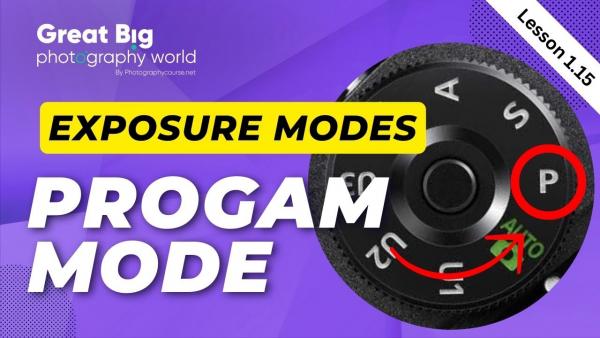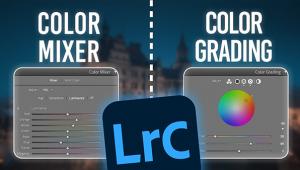When to Make Photos in Program Mode Even if You're Not a Novice (VIDEO)

Most experienced photographers turn up their noses at the Program exposure mode, preferring to shoot in Aperture Priority, Shutter Priority, or Manual. But as you'll see in this quick video from the Great Big Photography World channel, there are situations under which this "beginner" mode makes total sense—even if you have advanced skills.
Inexperienced shooters often choose Program because this setting transfers most exposure decisions to the camera, thereby enabling them to concentrate on other key considerations like composition. There is a bit of flexibility in this basic mode, because you're still able to set ISO yourself, thereby maintaining a modicum of control, even if other exposure settings are calculated automatically.
Today's unnamed instructor explains several reasons when Program mode makes sense, even for shooters who think, "I know what I'm doing." So set aside your skepticism for just three minutes and you just may be convinced to give this convenient approach a try..

One example works well for outdoor photography when the light is changing rapidly, like on days when small clouds are flowing across the sky and the sun is momentarily blocked before popping out into the open. Under conditions like this letting the camera set aperture and shutter speed is particularly helpful so you don't have to repeatedly change settings as the light changes.
When shooting in Program you'll want to pay close attention to the shutter speed chosen, especially on windy days with subject movement so that your images are sharp. This is one reason that the ability to manipulate ISO can come to the rescue. Some cameras even have a Program Shift feature that enables you quickly override the camera if need be—simply by rotating a Command dial.
Program mode can also be beneficial when capturing candid environmental portraits or wildlife photographs when subjects move in and out of shade, and you're unsure if you can react fast enough to get the light exactly right.

The bottom line is this: We're not trying to change your mind if you're comfortable shooting in Manual or one of the semi-automatic exposure modes. Rather, we just don't want you to ignore your camera's Program setting on those occasions when it will help you nail a fleeting moment.
The Great Big Photography World YouTube channel is full of straightforward shooting and editing lessons like this one. So be sure to take a look and explore what's available.
And if you're interested in learning another unconventional technique, check out the recent tutorial we featured that explains why and how you should experiment with telephoto landscape photography instead of always reaching for a wide-angle lens.
- Log in or register to post comments














































